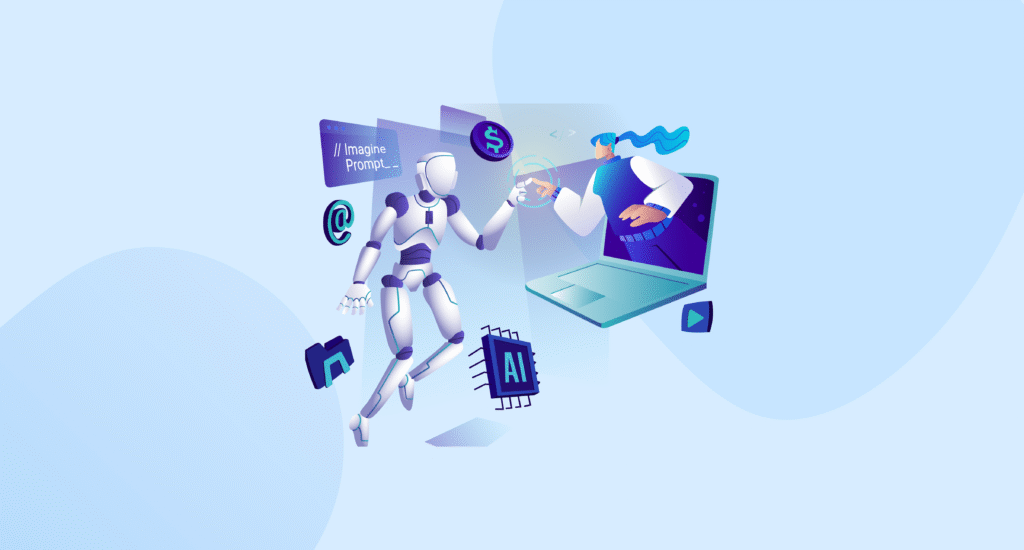Hiring full-time employees and building a team can be tedious, time-consuming, and expensive. Have you tried the TaaS model yet?
The global marketplace continues to evolve on the heels of COVID-19’s aftermath. Businesses across industries currently adopt flexible hiring models to accommodate teams outside their permanent employees. Being able to work with an external team to execute projects on time and avoid staff burnout is essential to business success. And here is where the model of “Team as a Service” enters the picture.
Gartner predicted the IT outsourcing industry to represent over half of the entire IT workforce in big industries by 2025. Outsourcing has been gaining momentum in recent years; however, companies require simpler project execution and greater productivity. That’s why companies now rely on the Team as a Service (TaaS) model as a subset of outsourcing to deliver on project goals.
In a dynamic business environment, scalability is crucial. IT services provide the flexibility to scale up or down your resources based on changing business needs. Cloud services, for instance, allow seamless expansion of storage and computational power

Serana Belluci
Product Designer
What is Team as a Service?
The “Team as a Service” (TaaS) is an operational model business adopted to pool skilled professionals for specific business projects. Companies that desire a skilled team for services on-demand. It is an emerging business solution that allows businesses access to the talent required for results without overstretching their regular staff.
How Does Team as a Service Work?
TaaS involves temporarily hiring professionals to complete certain projects. As an employer, you can choose to onboard an external TaaS partner instead of working with a freelancer or outsourcing company.
Members of the TaaS team will collaborate with your permanent staff (if necessary) to complete projects. You can choose to hire full-time or part-time TaaS teams throughout the project’s timeline. After the project’s completion, you can maintain contact with the TaaS partner at no cost until the next project.
TaaS can help provide specialized skills or more workers to complete your projects without long-running costs.
Why Team as a Service Model Makes Sense

Many businesses are turning to the Team as a Service model to remain relevant in competitive environments. The TaaS model offers several advantages over traditional hiring. Here’s a look at a few reasons why the TaaS model makes total sense to many businesses in the global marketplace:
Easy Access to Talent
According to Deloitte’s Global Outsourcing Survey of 2020, over 7 out of 10 employers were positive about outsourcing tasks to external professionals, citing their satisfaction with the services provided.
TaaS offers direct access to a pool of talent required to complete diverse tasks across industries, allowing businesses to meet their needs for ‘plug n’ play’ hiring of professionals to execute certain projects.
Cost-effective Operations
Costs associated with hiring full-time employees continue to skyrocket. Businesses seek a model that supports payment for services they get without much expenditure on operations and ongoing training. The growing demand for TaaS and outsourcing in general is evident in a 2019 Statista report which showed over $92.5 billion spent on outsourcing in that year.
Businesses can save recruitment costs, training costs, maintenance costs, benefits, and others by incorporating TaaS into regular operations.
Versatility
Regular hiring places more emphasis on individual roles in an organization. However, TaaS focuses on bringing together a complete team of professionals ready to execute projects on short notice.
You can also rely on TaaS in different departments in their operations. For example, a software services company could rely on the TaaS model to hire different teams for conceptual work, building project designs, product testing, etc. on a single project. However, it is worth noting that TaaS may not be advisable in some sensitive areas of a project.
Prevents Staff Burnout
Overwork is a major cause of staff burnout, especially among permanent employees in a demanding work environment. As an employer, you can work with a TaaS partner to ease the workload on permanent staff, allowing in-house teams to execute sensitive projects with greater focus.
Employers that adopt the TaaS model can ease workers’ burden by delegating certain tasks to external teams. Chances of burnout are reduced significantly due to this model, as more hands will be on deck to complete specific projects.
Communication and Collaboration
Hiring full-time employees could be tasking and demand greater resources compared to using Team as a Service. You can conveniently operate a TaaS model within your business in five (5) simple steps:
• Define projects requiring a TaaS model for completion: Some projects may be within the scope of your in-house team. Choose to work with a TaaS partner that delivers services that may be challenging for your current team to handle
• Search for TaaS providers: Find a provider that has stringent recruitment and software development processes like Arna Softech which has multiple assessment rounds, conducts background checks, and has stringent software development processes.
• Assess the performance of the TaaS team: Testimonials are vital to working with a TaaS team. Look through comments from previous clients to ensure the team offers satisfactory services.
• Conduct interviews: interview the TaaS team(s) you plan to work with to ensure they have the required skills to execute your projects
• Onboard the team: Onboarding the TaaS partner your project needs rounds off the hiring process. Most employers that adopt TaaS in their operations usually retain onboarding profiles of external teams for potential repeat hires.
Is “Team as a Service” the Same as Outsourcing?
Outsourcing projects to an external team largely place the firm’s operations out of your control. TaaS differs from the common outsourcing model, giving clients greater control of the team’s operations. In the TaaS model, you always have access to the team’s services and don’t need to conduct training whenever a new project arises. It is important to identify a provider where your team works like an extended team of yours and not like that of your provider.
Plug into a Smart Global Workforce with Team as a Service

TaaS continues to gain relevance in today’s evolving business environment, appealing to more companies in recent years. You can now operate in multiple locations and offer more services based on this model, providing more avenues for brand presence. TaaS also allows you to maintain a core employee base with a greater focus on specific projects.
The model allows you to retain permanent employees who understand and work towards your company’s mission. Retaining a lean and profitable workforce is another major advantage of TaaS for project operations.
TaaS can be an ideal option if you seek a shorter product-to-market duration. It becomes easier to manage remote teams through this model, and you can exert greater influence over the project at different stages.
It is a smart idea to have TaaS at your disposal in today’s hyper-competitive business environment. You can hire teams or developers from various technologies. For example, hiring a C# developer or team for mobile apps from a staff augmentation company may turn out to be cheaper in the long run. Completing projects and assuring profit is more convenient with this model.



